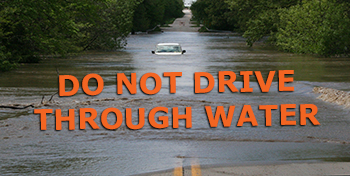The Importance of Emergency Response Equipment in Crisis Situations
When a crisis strikes, having the right emergency response equipment can make all the difference in saving lives and minimizing damage. From natural disasters like hurricanes and floods to medical emergencies and industrial accidents, being prepared with the necessary tools and supplies is essential for effective response and recovery efforts.
Types of Emergency Response Equipment
Emergency response equipment comes in various forms, each serving a specific purpose in different crisis situations. Some common types of emergency response equipment include:
- First Aid Kits: Essential for providing immediate medical assistance to individuals who are injured or experiencing health emergencies.
- Fire Extinguishers: Vital for controlling small fires before they escalate and cause extensive damage.
- Emergency Lighting: Ensures visibility during power outages or nighttime emergencies, facilitating safe evacuation and rescue operations.
- Communication Devices: Such as two-way radios, satellite phones, and emergency alert systems, enable effective communication among responders and affected individuals.
- Personal Protective Equipment (PPE): Including gloves, masks, goggles, and helmets to protect responders from hazards such as chemicals, biological agents, or debris.
- Search and Rescue Tools: Such as ropes, harnesses, shovels, and thermal imaging cameras used to locate and extract individuals trapped in collapsed structures or remote areas.
The Role of Emergency Response Equipment in Saving Lives
In times of crisis, quick access to well-maintained emergency response equipment can significantly impact the outcome of an emergency situation. Properly trained personnel equipped with the right tools can swiftly assess risks, provide aid to those in need, coordinate rescue operations effectively, and prevent further harm or casualties.
Furthermore, having reliable emergency response equipment enhances the overall preparedness of communities and organizations to handle unexpected events. Regular drills and training exercises using the equipment help improve response times and coordination among responders, ensuring a more efficient and organized approach during emergencies.
In Conclusion
The investment in quality emergency response equipment is an investment in safety and resilience. By equipping individuals, organizations, and communities with the necessary tools to respond effectively to crises, we can better protect lives and property when disaster strikes. Remember: preparedness today can save lives tomorrow.
7 Essential Tips for Managing Emergency Response Equipment Effectively
- Ensure emergency response equipment is easily accessible and clearly marked.
- Regularly inspect and maintain emergency response equipment to ensure it is in working condition.
- Train employees on how to properly use emergency response equipment.
- Keep an updated inventory of all emergency response equipment and supplies.
- Store different types of emergency response equipment in designated locations for easy access during different types of emergencies.
- Have a clear communication plan in place for accessing and using emergency response equipment during an emergency situation.
- Regularly review and update your emergency response procedures based on lessons learned from drills or real incidents.
Ensure emergency response equipment is easily accessible and clearly marked.
To enhance the effectiveness of emergency response efforts, it is crucial to ensure that all essential equipment is easily accessible and clearly marked. In times of crisis, quick access to emergency supplies can make a significant difference in the outcome of an emergency situation. By clearly labeling and strategically placing emergency response equipment in visible locations, responders can quickly locate and utilize the necessary tools to provide timely assistance and support. This simple yet critical tip can streamline response procedures and contribute to a more efficient and organized emergency response process.
Regularly inspect and maintain emergency response equipment to ensure it is in working condition.
Regularly inspecting and maintaining emergency response equipment is crucial to ensuring its effectiveness during times of crisis. By conducting routine checks and servicing, you can identify any issues or malfunctions early on and address them promptly. This proactive approach helps guarantee that your equipment is in optimal working condition when needed, reducing the risk of failure during emergency situations. Remember, a well-maintained emergency response kit can be the difference between a successful response and a potential disaster.
Train employees on how to properly use emergency response equipment.
It is crucial to train employees on how to properly use emergency response equipment to ensure a swift and effective response during crisis situations. By providing thorough training and hands-on practice, employees can familiarize themselves with the equipment’s functions, limitations, and proper usage protocols. This training not only enhances employee safety but also increases overall readiness and preparedness within the organization, enabling a coordinated and efficient response when emergencies arise.
Keep an updated inventory of all emergency response equipment and supplies.
It is crucial to maintain an updated inventory of all emergency response equipment and supplies to ensure readiness during crisis situations. By keeping track of the quantity, condition, and location of essential tools such as first aid kits, fire extinguishers, communication devices, and personal protective equipment, responders can quickly identify any deficiencies or shortages that need to be addressed. Regularly updating the inventory also helps in planning for restocking, maintenance, and replacement of equipment, enabling a more efficient and effective emergency response when needed most.
Store different types of emergency response equipment in designated locations for easy access during different types of emergencies.
Storing various types of emergency response equipment in designated locations is a crucial preparedness strategy to ensure quick and efficient access during different types of emergencies. By organizing and categorizing equipment based on the specific needs of various crisis scenarios, responders can easily locate and deploy the necessary tools without wasting precious time searching or gathering supplies. This proactive approach not only streamlines emergency response efforts but also enhances overall readiness and effectiveness in managing diverse emergency situations.
Have a clear communication plan in place for accessing and using emergency response equipment during an emergency situation.
Having a clear communication plan in place for accessing and using emergency response equipment during an emergency situation is crucial for ensuring a coordinated and effective response. Clear communication channels help streamline the process of requesting and deploying necessary equipment, minimizing delays and confusion. By establishing protocols for communication among responders, assigning responsibilities, and practicing communication procedures through drills and simulations, organizations can ensure that emergency response equipment is utilized efficiently to address the needs of those affected by the crisis.
Regularly review and update your emergency response procedures based on lessons learned from drills or real incidents.
It is crucial to regularly review and update your emergency response procedures based on lessons learned from drills or real incidents. By analyzing the effectiveness of your response during training exercises or actual emergencies, you can identify areas for improvement and make necessary adjustments to enhance your preparedness. Continuously refining your procedures ensures that you are better equipped to handle future crises with efficiency and effectiveness, ultimately increasing the safety and well-being of those involved.




